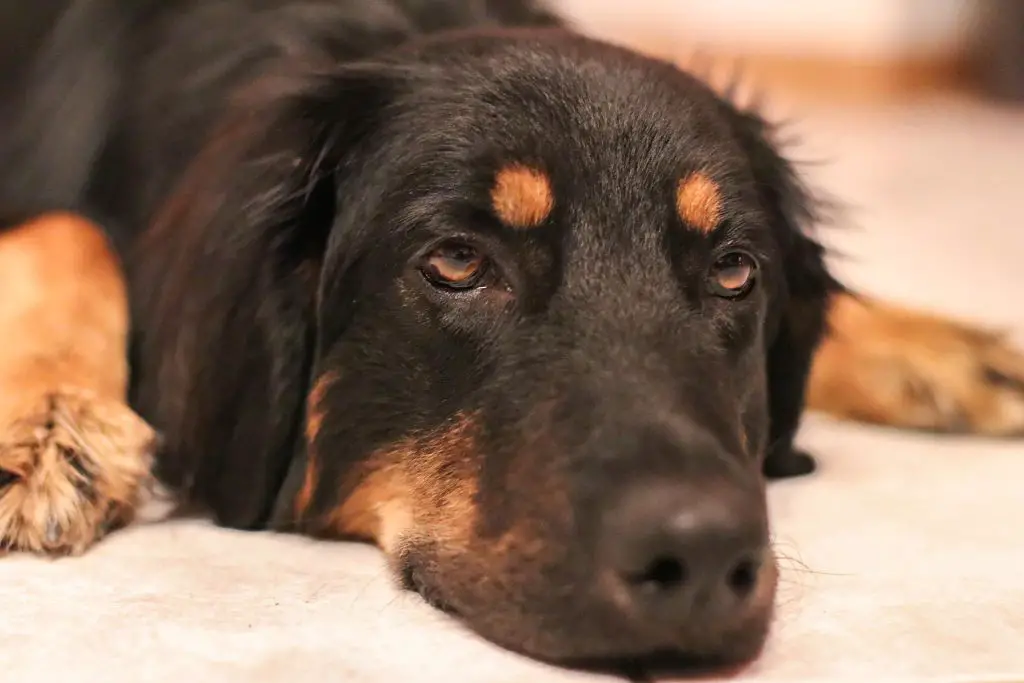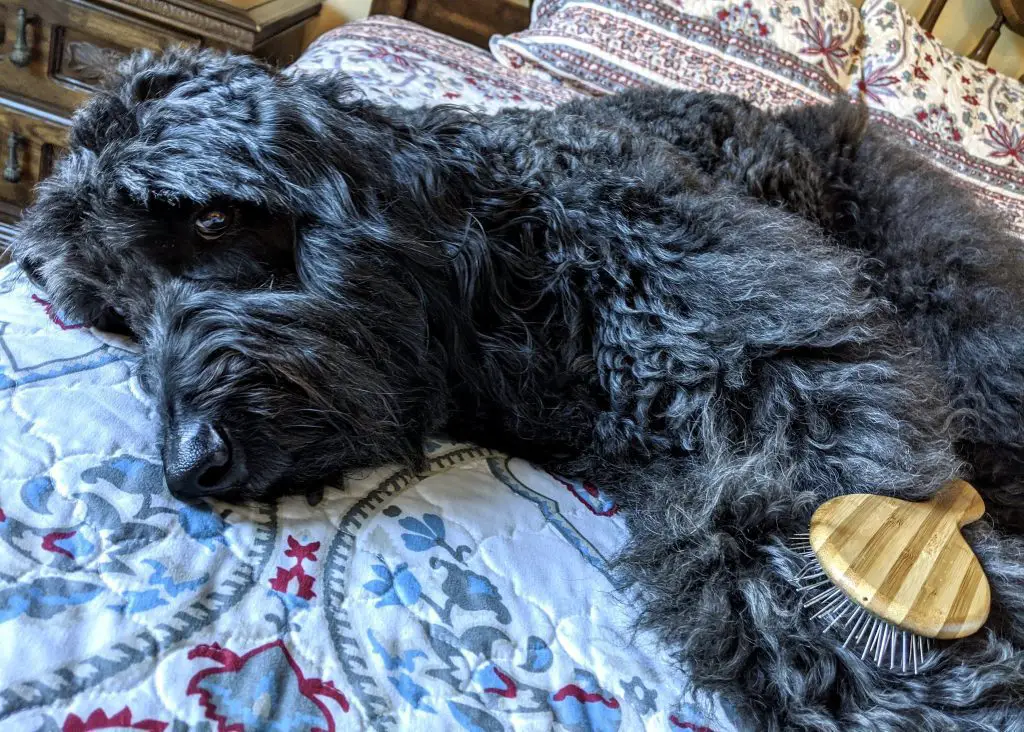Many dog owners have wondered whether or not their pet’s private parts swell up when they are in heat. This is a valid question, as the answer can help dog owners better understand their pet’s reproductive cycle.
In this blog post, we will answer whether or not dog’s private parts swell up when in heat?
Key Takeaway
- It’s normal for a female dog’s vulva to swell up when she is in heat, often becoming three to four times its original size, indicating the start of her estrus cycle.
- While it’s normal for a dog’s vulva to become three or four times its original size during heat, excessive swelling that doesn’t subside after the typical three-week heat cycle, or is accompanied by other symptoms like discharge or discomfort, may indicate a condition like vaginal hyperplasia and should be evaluated by a veterinarian.
- You can help a dog in heat by providing a comfortable and safe environment, maintaining cleanliness and hygiene, closely monitoring her behavior, preventing unwanted pregnancies, and consulting a vet for personalized advice.
Do Dog’s Private Parts Swell Up When in Heat?

Yes, the dog’s private parts do swell up when in heat. This is due to the increase in blood flow to the area. The vulva will appear swollen and there may be a discharge. The dog may also urinate more frequently. All of these changes are normal and nothing to worry about.
During her heat cycle, a female dog’s body goes through some changes that can cause her vulva to swell. The hormones released during this time can cause blood vessels to dilate and increase blood flow to the area. This can make the vulva appear larger and more engorged than usual.
The average length of time a dog is in heat is two to three weeks. However, some dogs may be in heat for only one week while others may be in heat for four weeks.
The bleeding usually lasts nine to ten days. Some dogs will have a bloody discharge for the entire duration of their heat while other dogs will have very little or no bleeding at all.
During the first few days of the heat cycle, your dog’s vulva will swell and she may seem restless and agitated. She may also urinate more frequently than usual.
As the cycle progresses, her behavior will become more normal and the swelling will subside. By the end of her cycle, your dog’s vulva should return to its normal size.
How Can You Tell a Dog Is In Heat
You can tell a dog is in heat by observing changes such as a swollen vulva, blood-tinged discharge, excessive licking of the genital area, altered behavior, and different reactions from male dogs.
Look for Physical Changes
One of the earliest signs that a dog is in heat is a swollen vulva. This swelling can be quite substantial and is often the first noticeable symptom. Along with this, you may also see a blood-tinged discharge. Some dogs may have heavy bleeding, while others only have slight spotting.
Notice Behavioral Changes
During their heat cycle, dogs may exhibit behavioral changes like becoming more clingy or showing aggression towards male dogs. They might also display mating behaviors such as tail flagging, where the tail is held to one side exposing the vulva.
Observe Excessive Licking
Dogs in heat tend to lick their genital area more frequently than usual. This is their way of keeping themselves clean when they have a discharge. If you notice your dog paying extra attention to her back end, she could be coming into heat.
Monitor Male Dogs’ Reactions
Male dogs often react differently to a female dog in heat. They may show increased interest in the female, even from a distance. This can be a clear indication that the female dog is in heat.
Look for Increased Urination
Female dogs in heat often urinate more frequently than usual. This is a way for them to spread their scent and signal to males that they are in heat. If your dog is asking to go out more often, it could be a sign that she’s in heat.
Pay Attention to Posture Changes
When a female dog is ready to mate, she may show this readiness through her posture. This includes standing with the tail held to the side to allow a male to mount, which is known as ‘flagging’. If your dog is exhibiting this behavior, she is likely in heat.
How Swollen Is Too Swollen For a Dog in Heat?

If your dog’s vulva is significantly swollen and she is in discomfort, it’s time to call the vet. If her vulva is only slightly swollen, you can probably wait a few days to see if things improve on their own.
However, If the swelling persists or gets worse, make an appointment with your veterinarian. Your dog may need antibiotics to clear up a bacterial infection or other treatment.
A dog’s vulva swells during her heat cycle as her body prepares for breeding. This swelling is caused by an increase in blood flow to the area. The swelling can last for several days or weeks and may be accompanied by discharge from the vulva.
During this time, your dog may be more affectionate than usual, and she may urinate more frequently. If you have a female dog who is not spayed, it is important to monitor her closely during her heat cycle to ensure that she does not become pregnant.
Spaying your dog will prevent her from going through heat cycles and will also help to keep her healthy.
In addition to the swelling, you may also notice that your dog’s vulva is red and irritated. She may be licking at it more than usual.
Many dog owners are unsure whether or not their dogs experience pain during heat cycles.
While some dogs seem to sail through this time of the month with no problems, others may seem to be in discomfort. If you’re wondering whether your dog is in pain during her heat cycle, here are a few signs to look for:
- Excessive panting
- Restlessness
- Lethargy
- loss of appetite
- Unusual vocalizations
If you notice any of these signs in your dog, it’s possible that she’s experiencing discomfort says Wag Walking.
How Can You Help a Dog in Heat?
To help a dog in heat, ensure she is comfortable, clean, and monitored closely, while also taking steps to prevent unwanted pregnancies.
Provide a Safe and Comfortable Environment
Ensure your dog has a quiet and comfortable space where she can rest. The area should be away from male dogs to avoid unwanted attention and possible pregnancies. A comfy bed or blanket will help her feel secure.
Keep Her Clean and Hygienic
A dog in heat will have some blood discharge, which can be messy. Regularly cleaning her bedding and using specially designed doggie diapers or pads can keep both the dog and your home clean.
Monitor Her Behavior Closely
Keep a close eye on your dog’s behavior. Changes in eating habits, energy levels, or signs of discomfort may indicate a health issue that requires veterinary attention.
Avoid Unwanted Pregnancies
Unwanted pregnancies can lead to health risks for your dog and an unexpected litter of puppies. It’s crucial to keep your dog indoors or on a leash during walks to avoid contact with male dogs.
Consult a Vet for Advice
Your vet can provide advice tailored to your dog’s specific needs. They can guide you on managing the heat cycle and discuss options like spaying if you do not intend to breed your dog.
How Do You Know When Dog Heat Is Over?
Although every dog is different, most heat lasts about three weeks. You will know that your dog’s heat is over after the bleeding has stopped and your dog’s vulva has returned to its normal size, she will be ready to breed.
If your dog has a decrease in bloody discharge, her vulva is returning to its normal size, she lost interest in mating and is urinating less, these are signs that her heat cycle is over.
There are four stages to a dog heat cycle: proestrus, estrus, diestrus, and anestrus. Proestrus is when the vulva begins to swell and the dog may bleed. This stage lasts anywhere from nine to seventeen days.
Estrus is when the dog is receptive to breeding and will stand for the male dog. This stage typically lasts five to thirteen days.
Diestrus is when the dog is no longer receptive to breeding and her vulva returns to normal size. This stage can last sixty to ninety days.
Anestrus is the resting phase in between heat cycles and can last ninety days or more. Knowing these stages can help you better understand your dog’s behavior during her heat cycle.
How often a dog goes into heat can also be affected by whether or not the dog has been spayed or neutered. Dogs that have been spayed or neutered will generally go into heat less often than those that have not been spayed or neutered. However, most female dogs go into heat every six months.
FAQs
Conclusion and final thoughts
In conclusion, it is clear that the swelling of a dog’s private parts during heat is a natural and normal physiological response.
This occurs due to hormonal changes and the body’s preparation for potential mating.
As pet owners, it is important to understand and monitor this process in our dogs, as well as provide appropriate care and attention during this time.




